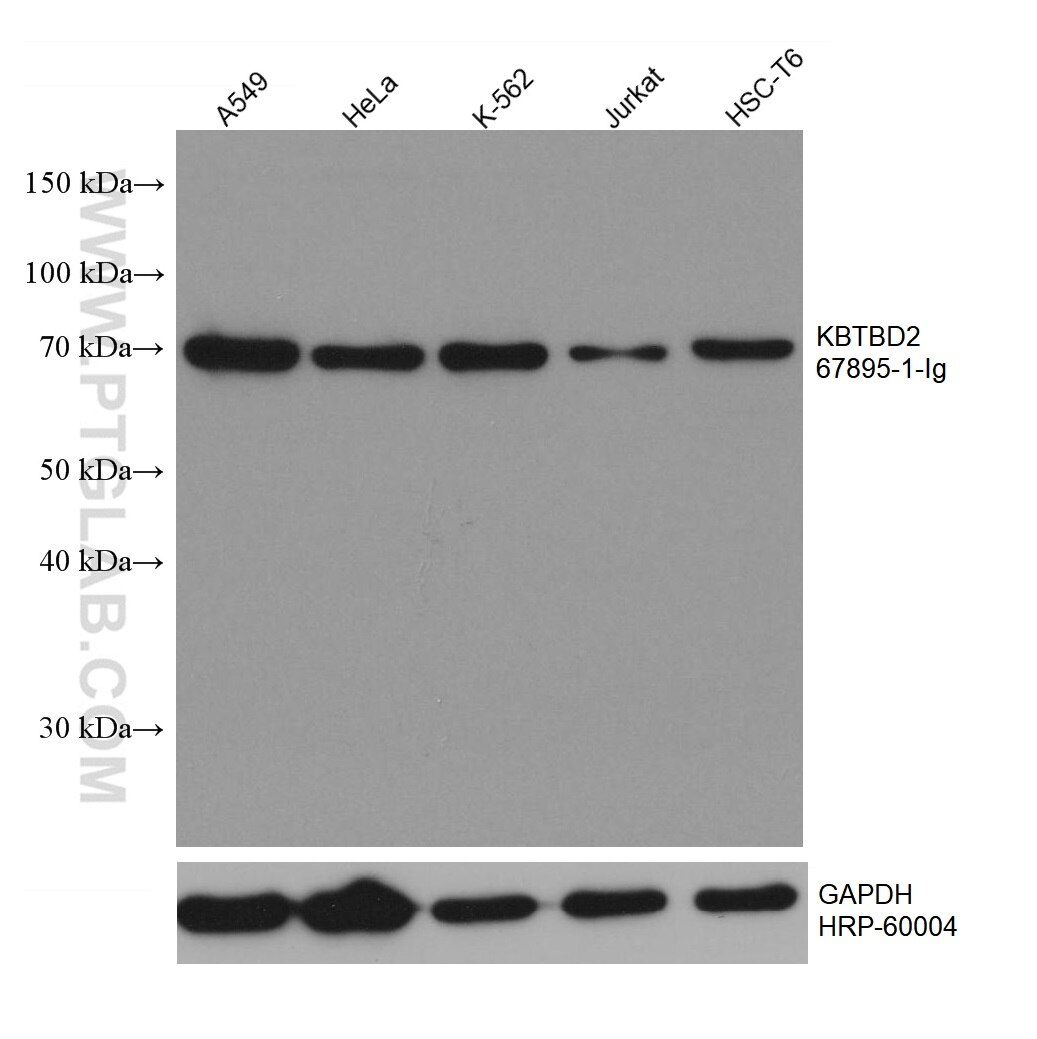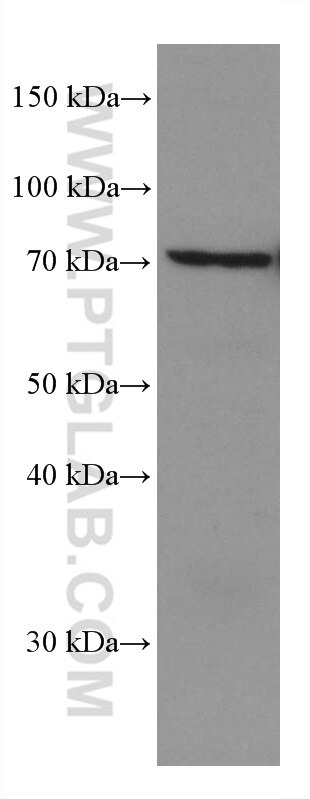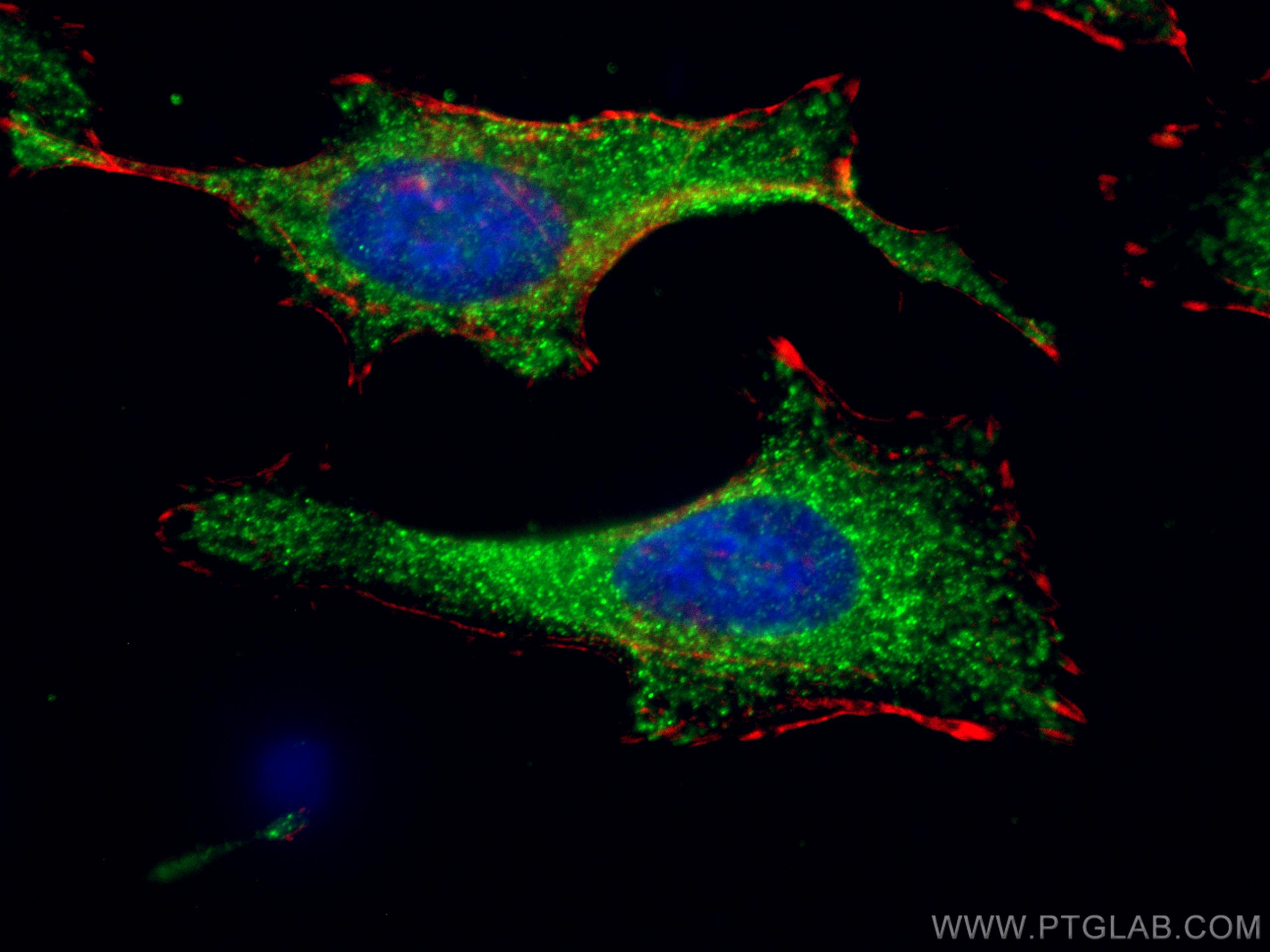- Phare
- Validé par KD/KO
Anticorps Monoclonal anti-KBTBD2
KBTBD2 Monoclonal Antibody for WB, IF/ICC, Indirect ELISA
Hôte / Isotype
Mouse / IgG1
Réactivité testée
Humain, rat, souris
Applications
WB, IF/ICC, Indirect ELISA
Conjugaison
Non conjugué
CloneNo.
2A9F3
N° de cat : 67895-1-PBS
Synonymes
Galerie de données de validation
Informations sur le produit
67895-1-PBS cible KBTBD2 dans les applications de WB, IF/ICC, Indirect ELISA et montre une réactivité avec des échantillons Humain, rat, souris
| Réactivité | Humain, rat, souris |
| Hôte / Isotype | Mouse / IgG1 |
| Clonalité | Monoclonal |
| Type | Anticorps |
| Immunogène | KBTBD2 Protéine recombinante Ag4933 |
| Nom complet | kelch repeat and BTB (POZ) domain containing 2 |
| Masse moléculaire calculée | 622 aa, 71 kDa |
| Poids moléculaire observé | 60-70 kDa |
| Numéro d’acquisition GenBank | BC047107 |
| Symbole du gène | KBTBD2 |
| Identification du gène (NCBI) | 25948 |
| Conjugaison | Non conjugué |
| Forme | Liquide |
| Méthode de purification | Purification par protéine G |
| Tampon de stockage | PBS only |
| Conditions de stockage | Store at -80°C. 20ul contiennent 0,1% de BSA. |
Informations générales
Kelch repeat and BTB domain containing 2(KBTBD2), also known as BTB and kelch domain-containing protein 1, encodes a BTB-Kelch family subunit that p85α-specific recognition for the Cullin3-based E3 ubiqitin ligase complex, which regulates p85α protein ubiquitination and subsequently regulates phosphoinositide-3 kinases (PI3K) signaling (PMID:27708159). However, the expression profile and functional significance of Kbtbd2 is still largely unknown. The Human Protein Atlas which is an online source shows high Kbtbd2 expression in the spleen and thymus, suggesting that Kbtbd2 might involved in immunization (PMID:29331106). In addition, Kbtbd2 is related to Src-induced phosphorylation of protein, spermatogonial stem cell activity(PMID:15623525, 29331106).







